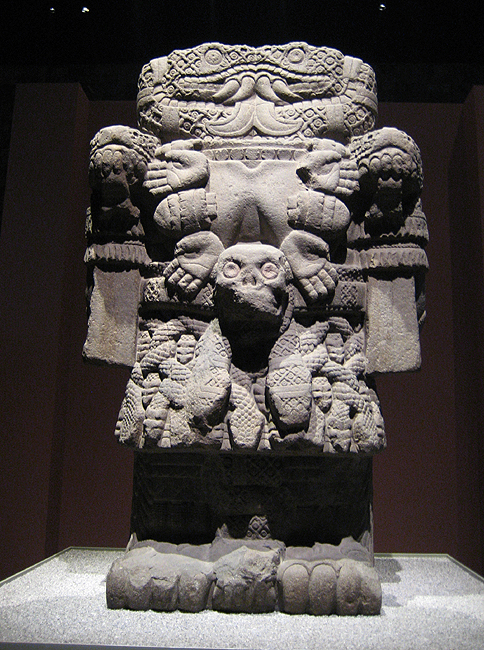Source: WTL© scholar/professor/tourist photograph taken at MNA in 2007.
Comments: This is the front of the statue of Coatlicue, the goddess mother of Huitzilopochtli (the war god). In artistic terms, what we see is a figurative representation that is also remotely or somewhat anthropormorphic (i.e., human-like). This image of the goddess is the summation of binary forces: creation and destruction, birth and death, beginning and end, light and darkness. She represents the goddess that consumes her offspring; in other words, she / it also consumes filth. That is, she represents the dynamic concentration of the horrors of life and the universe. This huge, four-sided, larger-than-life granite stone statue, is, for me, the most impressive and most threatening artistic creation of the Aztec humanities. The front and the back (see #15) are of equal importance. This statue is a sum of Aztec elements, concepts, and ideologies.
What we see is horrifying. It seems horrifying now, and it was intended to be horrifying when it was created. This goddess has twin serpent heads for a face; a chain necklace of amputated hands and hearts; a skull for a waistline, belt buckle, tie, or necklace pendant; intertwined snakes or jets of blood for a skirt; and claws for feet. The back side is just as horrifying. However, there is a positive side to Coatlicue, because she represents the circle of life and the unifying opposites that, indeed, do make up human life. Life comes from death, which, fertilized, leads again to life, etc. Let's discuss this statue in class.

